Papers by Jesus Pineda-Ramirez

To understand the roles of acute-phase viral dynamics and host immune responses in post-acute seq... more To understand the roles of acute-phase viral dynamics and host immune responses in post-acute sequelae of SARS-CoV-2 infection (PASC), we enrolled 136 participants within 5 days of their first positive SARS-CoV-2 real-time PCR test. Participants self-collected up to 21 nasal specimens within the first 28 days post-symptom onset; interviewer-administered questionnaires and blood samples were collected at enrollment, days 9, 14, 21, 28, and month 4 and 8 post-symptom onset. Defining PASC as the presence of any COVID-associated symptom at their 4-month visit, we compared viral markers (quantity and duration of nasal viral RNA load, infectious viral load, and plasma N-antigen level) and host immune markers (IL-6, IL-10, TNF-α, IFN-α, IFN-γ, MCP, IP-10, and Spike IgG) over the acute period. Compared to those who fully recovered, those reporting PASC demonstrated significantly higher maximum levels of SARS-CoV-2 RNA and N-antigen, burden of RNA and infectious viral shedding, and lower Spike-specific IgG levels within 9 days post-illness onset. No significant differences were identified among a panel of host immune markers. Our results suggest early viral dynamics and the associated host immune responses play a role in the pathogenesis of PASC, highlighting the importance of understanding early biological markers in the natural history of PASC. Post-acute sequelae of SARS-CoV-2 infection (PASC) include ongoing symptoms in the months following acute COVID-19. Estimates of the occurrence of PASC can vary, but as of 2024, estimates suggest that 6.9% of U.S. adults have ever had PASC 1,2 . Despite a growing understanding of its epidemiology and natural history, the pathogenesis of PASC remains incompletely understood 3 . Multiple mechanisms that could contribute to this condition are now under investigation . Viral antigen persistence and immune dysregulation are two mechanisms that might drive PASC . For example, recent work has suggested that a high proportion of individuals with PASC demonstrate detectable SARS-CoV-2 antigen in blood plasma during the postacute phase , subgenomic RNA has been identified in widespread tissue sites at autopsy for up to 6 months post-COVID 6 , and RNA has been found in gut and other tissues in living individuals . Furthermore, studies comparing individuals with PASC with those who report

To investigate the prevalence, patterns, and predictors of SARS-CoV-2 RNA and culturable virus in... more To investigate the prevalence, patterns, and predictors of SARS-CoV-2 RNA and culturable virus in tears of a case-ascertained household cohort. • DESIGN: Prospective, longitudinal case-ascertained household cohort identified through convenience sampling. • METHODS: This analysis was restricted to individuals who were non-hospitalized, symptomatic, and tested positive for SARS-CoV-2 by nasal RT-PCR. Tears and anterior nasal biospecimens were serially collected throughout the acute period. Tears specimens were collected by the study staff using Schirmer test strips, and nasal specimens were self-collected. For both, SARS-CoV-2 RNA was quantified using qRT-PCR, and culturable virus was detected using presence of cytopathic effect (CPE) in tissue culture; positive CPE was confirmed by a qRT-PCR step. A series of cross-sectional unadjusted analyses were performed investigating the relationship between differ-Supplemental Materials available at AJO.com .
bioRxiv (Cold Spring Harbor Laboratory), Jun 19, 2024

To understand the roles of acute phase viral dynamics and host immune responses in PASC, we enrol... more To understand the roles of acute phase viral dynamics and host immune responses in PASC, we enrolled 136 participants within 5 days of their first positive SARS-CoV-2 real-time PCR. Participants self-collected nasal specimens up to 21 times within the first 28 days after symptom onset; Interviewer-administered clinical questionnaires and blood samples were collected at enrollment and days 9, 14, 21, 28, and month 4 and 8 post-symptom. Defining PASC as the presence of any symptom new or worse since infection reported at their 4-month visit, we compared viral markers (quantity and duration of viral RNA load, infectious viral load, and plasma N-antigen level) and host immune markers (IL-6, IL-10, TNF-α, IFN-α, IFN-γ, MCP, IP-10, and Spike IgG) over the acute period. In comparison to those who fully recovered, those who developed PASC demonstrated significantly higher maximum levels of SARS-CoV-2 RNA, infectious virus, and N-antigen, longer duration of viral shedding, and lower Spike-sp...

Open Forum Infectious Diseases
Background The influence of severe acute respiratory syndrome coronavirus 2 (SARS-CoV-2) RNA leve... more Background The influence of severe acute respiratory syndrome coronavirus 2 (SARS-CoV-2) RNA level and presence of infectious virus on symptom occurrence is poorly understood, particularly among nonhospitalized individuals. Methods The study included 85 nonhospitalized, symptomatic adults, who were enrolled from September 2020 to November 2021. Data from a longitudinal cohort studied over 28 days was used to analyze the association of individual symptoms with SARS-CoV-2 viral RNA load, or the presence or level of infectious (culturable) virus. Presence of infectious virus and viral RNA load were assessed daily, depending on specimen availability, and amount of infectious virus was assessed on the day of maximum RNA load. Participants were surveyed for the start and end dates of 31 symptoms at enrollment and at days 9, 14, 21, and 28; daily symptom presence was determined analytically. We describe symptoms and investigate their possible association with viral determinants through a s...
medRxiv (Cold Spring Harbor Laboratory), Feb 7, 2023
doi: medRxiv preprint NOTE: This preprint reports new research that has not been certified by pee... more doi: medRxiv preprint NOTE: This preprint reports new research that has not been certified by peer review and should not be used to guide clinical practice.
The Journal of Infectious Diseases, Jan 27, 2023
Open Forum Infectious Diseases, Dec 1, 2022
doi: medRxiv preprint NOTE: This preprint reports new research that has not been certified by pee... more doi: medRxiv preprint NOTE: This preprint reports new research that has not been certified by peer review and should not be used to guide clinical practice.
From two SARS-CoV-2 household transmission studies (enrolling April 2020-January 2022) with rapid... more From two SARS-CoV-2 household transmission studies (enrolling April 2020-January 2022) with rapid enrollment and specimen collection for 14 days, 61% (43/70) of primary cases had culturable-virus detected ≥6 days post-onset. Risk of secondary infection among household contacts tended to be greater when primary cases had culturable-virus detected after onset. Regardless of duration of culturable-virus, most secondary infections [70% (28/40)] had serial intervals <6 days, suggesting early transmission. These data examine viral culture as a proxy for infectiousness, reaffirm the need for rapid control measures after infection and highlight the potential for prolonged infectiousness (≥6 days) in many individuals.
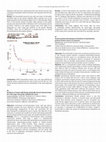
Gynecologic Oncology Reports
Wilcoxon rank-sum test. Progression-free and overall survival were calculated using Kaplan-Meier ... more Wilcoxon rank-sum test. Progression-free and overall survival were calculated using Kaplan-Meier estimates and compared with the logrank test. Results: The household income by zip code was lower in the public (p=0.005) than in the private hospital. Most common race in the public hospital was Non-Hispanic Black (52%) vs Non-Hispanic White (61%) in the private system (p<0.001). Most patients in the public system were uninsured (59%) vs Medicare (61%) in the private system (p<0.001). Patients in the public hospital were more likely to be diagnosed at a later stage than patients in the private hospital (p=0.045). There was no difference in progression-free or overall survival between the hospital systems. Conclusions: While household income, race, and stage differed by hospital system, progression-free and overall survival did not. The lack of outcome disparity may be attributable to the same physician team.
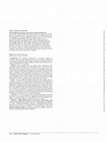
Open Forum Infectious Diseases
Background The biological determinants of post-acute sequelae of SARS-CoV-2 infection (PASC), def... more Background The biological determinants of post-acute sequelae of SARS-CoV-2 infection (PASC), defined as the persistence or recurrence of symptoms not explained by an alternative medical diagnosis, are poorly understood. We assessed viral and immunological determinants during acute SARS-CoV-2 infection for an association with PASC at 4 to 8 months. Methods From September 2020 to February 2022, symptomatic non-hospitalized individuals with laboratory-confirmed SARS-CoV-2 infection were identified within 5 days of symptom onset. We used anterior nasal biospecimens to measure the magnitude and duration of RNA and infectious viral shedding as well as blood samples to measure soluble markers of inflammation during the acute phase (first 28 days post-enrollment). PASC was defined as self-report of 1 or more COVID-19 attributed symptoms between 4 and 8 months after initial illness. We compared virologic and inflammatory markers, GFAP (a marker of neuronal damage) and neutralizing antibody ...
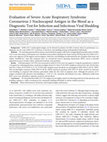
Background. SARS-CoV-2 nucleocapsid antigen can be detected in plasma, but little is known about ... more Background. SARS-CoV-2 nucleocapsid antigen can be detected in plasma, but little is known about its performance as a diagnostic test for acute SARS-CoV-2 infection or infectious viral shedding among nonhospitalized individuals. Methods. We used data generated from anterior nasal and blood samples collected in a longitudinal household cohort of SARS-CoV-2 cases and contacts. Participants were classified as true positives if polymerase chain reaction (PCR) positive for SARS-CoV-2 and as true negatives if PCR negative and seronegative. Infectious viral shedding was determined by the cytopathic effect from viral culture. Stratified by 7 days after symptom onset, we constructed receiver operating characteristic (ROC) curves to describe optimized accuracy (Youden index), optimized sensitivity, and specificity. Results. Of 80 participants, 58 (73%) were true positives while 22 (27%) were true negatives. Using the manufacturer's cutoff of 1.25 pg/mL for evaluating infection, sensitivity was higher from 0 to 7 days (77.6% [95% confidence interval {CI}, 64%-88.2%]) than from 8 to 14 days (43.2% [95% CI, 31.1%-54.5%]) after symptom onset; specificity was unchanged at 100% (95% CI, 88.1%-100%). This test had higher sensitivity (100% [95% CI, 88.4%-100%]) and lower specificity (65% [95% CI, 40.8%-84.6%]) for infectious viral shedding as compared with infection, particularly within the first week of symptom onset. Although the presence of Nantigen correlated with infectious viral shedding (r = 0.63; P < .01), sensitivity still declined over time. Additional cutoffs from ROC curves were identified to optimize sensitivity and specificity. Conclusions. We found that this SARS-CoV-2 N-antigen test was highly sensitive for detecting early but not late infectious viral shedding, making it a viable screening test for community-dwelling individuals to inform isolation practices.
BACKGROUND: Nature provides numerous physical and mental health benefits. Communities of color ex... more BACKGROUND: Nature provides numerous physical and mental health benefits. Communities of color experience disparities in rates of obesity, chronic disease, and mental health issues. The Latino community faces inequalities in access and exposure to nature, a ecting access to nature's benefits. The Park Rx program is a collaborative between clinic, public health, and parks departments to prescribe nature to children and families through bimonthly walks at local parks.
Morbidity and Mortality Weekly Report, Sep 9, 2022

The Journal of Infectious Diseases
Background As of early 2022, the Omicron variants are the predominant circulating lineages global... more Background As of early 2022, the Omicron variants are the predominant circulating lineages globally. Understanding neutralizing antibody responses against Omicron BA.1 and BA.2 following vaccine breakthrough infections will provide insights into BA.2 infectivity and susceptibility to subsequent re-infection. Methods Live virus neutralization assays were used to study immunity against Delta and Omicron BA.1 and BA.2 variants in samples from 86 individuals, 24 unvaccinated (27.9%) and 63 vaccinated (72.1%), who were infected with Delta (n = 42, 48.8%) or BA.1 (n = 44, 51.2%). Among the 63 vaccinated individuals, 39 were unboosted (45.3%), while 23 were boosted (26.7%). Results In unvaccinated infections, neutralizing antibodies (nAbs) against the three variants were weak or undetectable, except against Delta for Delta-infected individuals. Both Delta and BA.1 breakthrough infections resulted in strong nAb responses against ancestral wild-type and Delta lineages, but moderate nAb respo...
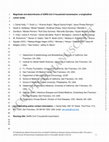
Clinical Infectious Diseases
Background Households have emerged as important venues for severe acute respiratory syndrome coro... more Background Households have emerged as important venues for severe acute respiratory syndrome coronavirus 2 (SARS-CoV-2) transmission. Little is known, however, regarding the magnitude and determinants of household transmission in increasingly vaccinated populations. Methods From September 2020 to January 2022, symptomatic nonhospitalized individuals with SARS-CoV-2 infection by RNA detection were identified within 5 days of symptom onset; all individuals resided with at least 1 other SARS-CoV-2–uninfected household member. These infected persons (cases) and their household members (contacts) were subsequently followed with questionnaire-based measurement and serial nasal specimen collection. The primary outcome was SARS-CoV-2 infection among contacts. Results We evaluated 42 cases and their 74 household contacts. Among the contacts, 32 (43%) became infected, of whom 5 (16%) were asymptomatic; 81% of transmissions occurred by 5 days after the case’s symptom onset. From 21 unvaccinate...
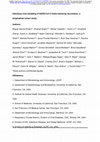
The impact of vaccination on SARS-CoV-2 infectiousness is not well understood. We compared longit... more The impact of vaccination on SARS-CoV-2 infectiousness is not well understood. We compared longitudinal viral shedding dynamics in unvaccinated and fully vaccinated adults. SARS-CoV-2-infected adults were enrolled within 5 days of symptom onset and nasal specimens were self-collected daily for two weeks and intermittently for an additional two weeks. SARS-CoV-2 RNA load and infectious virus were analyzed relative to symptom onset stratified by vaccination status. We tested 1080 nasal specimens from 52 unvaccinated adults enrolled in the pre-Delta period and 32 fully vaccinated adults with predominantly Delta infections. While we observed no differences by vaccination status in maximum RNA levels, maximum infectious titers and the median duration of viral RNA shedding, the rate of decay from the maximum RNA load was faster among vaccinated; maximum infectious titers and maximum RNA levels were highly correlated. Furthermore, amongst participants with infectious virus, median duration...
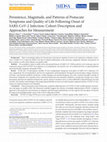
Open Forum Infectious Diseases, 2021
Background There is mounting evidence for the presence of postacute sequelae of severe acute resp... more Background There is mounting evidence for the presence of postacute sequelae of severe acute respiratory syndrome coronavirus 2 (SARS-CoV-2) infection (PASC), but there is limited information on the spectrum, magnitude, duration, and patterns of these sequelae as well as their influence on quality of life. Methods We assembled a cohort of adults with a documented history of SARS-CoV-2 RNA positivity at ≥2 weeks past onset of coronavirus disease 2019 (COVID-19) symptoms or, if asymptomatic, first positive test. At 4-month intervals, we queried physical and mental health symptoms and quality of life. Results Of the first 179 participants enrolled, 10 were asymptomatic during the acute phase of SARS-CoV-2 infection, 125 were symptomatic but not hospitalized, and 44 were symptomatic and hospitalized. During the postacute phase, fatigue, shortness of breath, concentration problems, headaches, trouble sleeping, and anosmia/dysgeusia were most common through 8 months of observation. Sympto...

ABSTRACTBACKGROUNDAs the coronavirus disease 2019 (COVID-19) pandemic continues and millions rema... more ABSTRACTBACKGROUNDAs the coronavirus disease 2019 (COVID-19) pandemic continues and millions remain vulnerable to infection with severe acute respiratory syndrome-coronavirus-2 (SARS-CoV-2), attention has turned to characterizing post-acute sequelae of SARS-CoV-2 infection (PASC).METHODSFrom April 21 to December 31, 2020, we assembled a cohort of consecutive volunteers who a) had documented history of SARS-CoV-2 RNA-positivity; b) were ≥ 2 weeks past onset of COVID-19 symptoms or, if asymptomatic, first test for SARS-CoV-2; and c) were able to travel to our site in San Francisco. Participants learned about the study by being identified on medical center-based registries and being notified or by responding to advertisements. At 4-month intervals, we asked participants about physical symptoms that were new or worse compared to the period prior to COVID-19, mental health symptoms and quality of life. We described 4 time periods: 1) acute illness (0-3 weeks), 2) early recovery (3-10 wee...

Uploads
Papers by Jesus Pineda-Ramirez
American Dreaming: The Roadmap to Resilience for Undocumented Storytellers is the culmination of two years of research with 40 storytellers from the immigrant rights movement who bravely shared their stories through the Obama, Trump, and Biden eras of U.S. history. We acknowledge the strong history of immigrant rights movements in the U.S. and build on the foundation of those that came before us in our examination of the undocumented youth movement of the 21st century.
The research is based on a mixed method study, including: mental health surveys on seven measures, life history interviews, and a digital storytelling workshop. Written in first person plural (i.e. “we”), the report is a composite narrative that reflects salient themes from the study participants. The group was undocumented or formerly undocumented Americans, between the ages of 25–40, who began sharing their stories publicly prior to the announcement of DACA.
The findings are intended as a map for well-being for all those who follow the path of bold storytelling in the immigrant rights movement